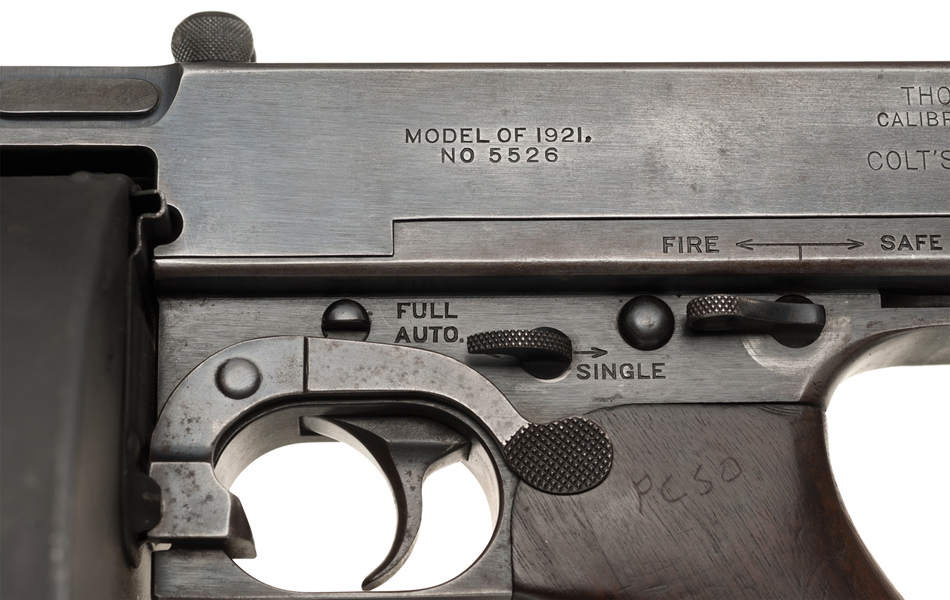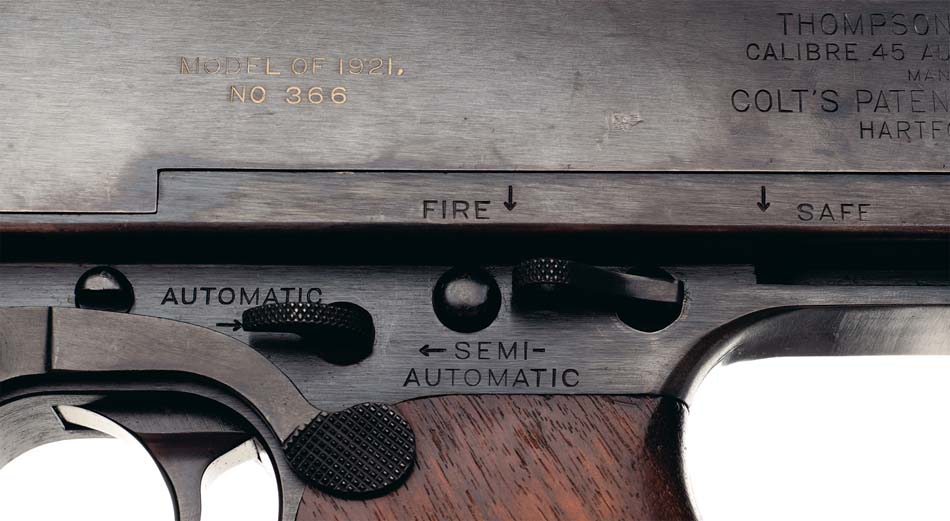Thompson Machine Gun Serial Numbers
M60 Part 1The following article(s) are republished with permission of the author, Thomas T. Hoel of Tactical Advantage. The articles were originally published as a 6-part series beginning in the November 2003 issue of Small Arms Review. All content © 2003-2017 by Thomas T. Hoel.The Civilian M60 Machinegun Owners GuidePart 1There always seems to be a certain few military firearms that bear an unusual and universal interest for collectors and students of Military weaponry. M60 General Purpose Machinegun has always occupied just such a position within the Civilian NFA weapons owning population.
- Thompson Machine Gun Replicas
- Thompson Machine Gun Serial Numbers Lookup
- Thompson Machine Gun For Sale

Although there also seems to be little ability to compromise on feelings toward the design, as it is either highly praised or deeply maligned. While in the past literally volumes have been written on the military adoption and use of this interesting weapon, the scope of this discussion is strictly to aid the Civilian owner-operator of the M60 GPMG as a guide in obtaining maximum enjoyment, usefulness and longevity of his personally owned machinegun.Additionally, specific recommendations discussed herein for operation strictly in the Civilian Realm will be presented as the civilian owner-operator has certain freedoms, and also certain limitations, that the original military end-users may not. The M60 has a number of well-known characteristic wear and failure profiles for certain component parts and assemblies. Anything the civilian owner-operator can do to decrease operating stresses and attendant wear and tear on component parts or assemblies, will serve to prevent unnecessary or premature wear and failure of these parts, adding tremendously to the life expectancy, serviceability, and enjoyment of the weapon as a whole.
Thompson Machine Gun Replicas
This should be the primary concern with such a large investment, as these privately owned machineguns represent.While certain distinct personality traits of the M60 design may not at all pose a serious or dangerous matter for the civilian owner in the recreational shooting environment if/when they cause a failure to function, they bear discussion to further the serviceability and enjoyment of personally owned examples of this famous military standard small arm. This discussion is divided into two sections. The first detailing the receiver, its sub-components and construction, along with recommended practices for the care and preservation of the receiver as an assembly. The second part will discuss the various and sundry peripheral assemblies that complete the weapon, with the same emphasis in the discussion provided as appropriate.Many of the long established military use and service protocols exist for reasons specific to the military/combat environment, or specific Governmental exigencies. These include repair or service protocols where the actual military end-user is not to be concerned with the costs of repair, even if the supply of spare parts was limited. Since the civilian owner-operator is not bound by such exigencies, he should exploit any and all maintenance and operating schemes that benefit preserving of the serviceability of the weapon over an extended period of time and use, along with minimizing actual financial outlays for avoidable repairs parts or services.
As such, certain of these recommendations are intended for use only in the civilian realm, and do not represent advice or recommendations for operational use, or maintenance functionality, of the weapon in any military or law enforcement scenarios!The Heart of the MatterThose M60 machineguns that are available to the civilian collector of NFA weapons can be described as being of two basic origins. The first important distinction, and the one which relates most strongly to their value as collectibles only, concerns the manufacturing origins.The top rung on the collectability ladder are those guns that were originally manufactured by a genuine military contract producer. Although their numbers are quite small there are, remarkably, a certain number of M60's that are of true military production-line origin and pedigree. Due to these contract producers being private companies, they were able to offer the exact same weapons they were producing under military contracts additionally to both domestic law enforcement concerns, or in general terms, for export to approved Friendly Nations clients. Not all guns originally destined for either of those last two markets though ended up there, mainly due to some quirks in salesmanship domestically, and as such a few of those guns have been able to enter the civilian market and placed into the NFRTR. The salient feature of these specific guns is that they can all be described as being manufactured and assembled to full military specification, in both materials and workmanship, in all component parts and assemblies. While this distinction often has no bearing on serviceability for Sport shooting purposes, it can be a definite value difference appreciated by those whose interests run more to collectability of 'real' martial arms.

Thompson Machine Gun Serial Numbers Lookup
(For the purposes of this discussion we will consider these particular guns to be of “military” origin, even though actually produced under Government contract by a private company, as opposed to a Government Arsenal.)The second group of guns is that in which the receiver, the legally controlled component part or assembly, was manufactured by any method, by anyone, other than the original military contract producers. This is the most critical distinction in the pedigree (and value) of civilian available M60 guns, and bears careful discussion. (These guns we will discuss with the agreed definition of “commercial production” being used as they were manufactured with no intention of military use.)Receiver BasicsThe 'receiver' of the M60 machinegun on all of its several variant models is actually an assembly of several component parts, permanently or semi-permanently joined to render the complete functional assembly. BATF Technology Branch has recently authored a reply to an inquiry letter asking for a definition of what legally constitutes an M60 machinegun 'receiver'.
It is over 200 brush marks and picked only the best for this product. Illustrator effects download.
Thompson Machine Gun For Sale
By rendering this recent official opinion on what legally constitutes the controlled part of an M60 machinegun 'receiver' they introduced considerable confusion into what has here-to-fore been given as the legal definition under previous Technology Branch Administrations. The ‘current’ (as of 11/2001) BATF Technology Branch definition of a “M60 machinegun receiver” is:“the frame or receiver of the M60 machinegun consists of a bottom plate(sic), two side plates(sic), the bridge, and a trunnion. The top cover, while attaching to the receiver, is not considered a part of the receiver”.This definition is significant as it fails to consider two of the most structurally important receiver component pieces, namely the receiver sheet metal channel and the gas tube.